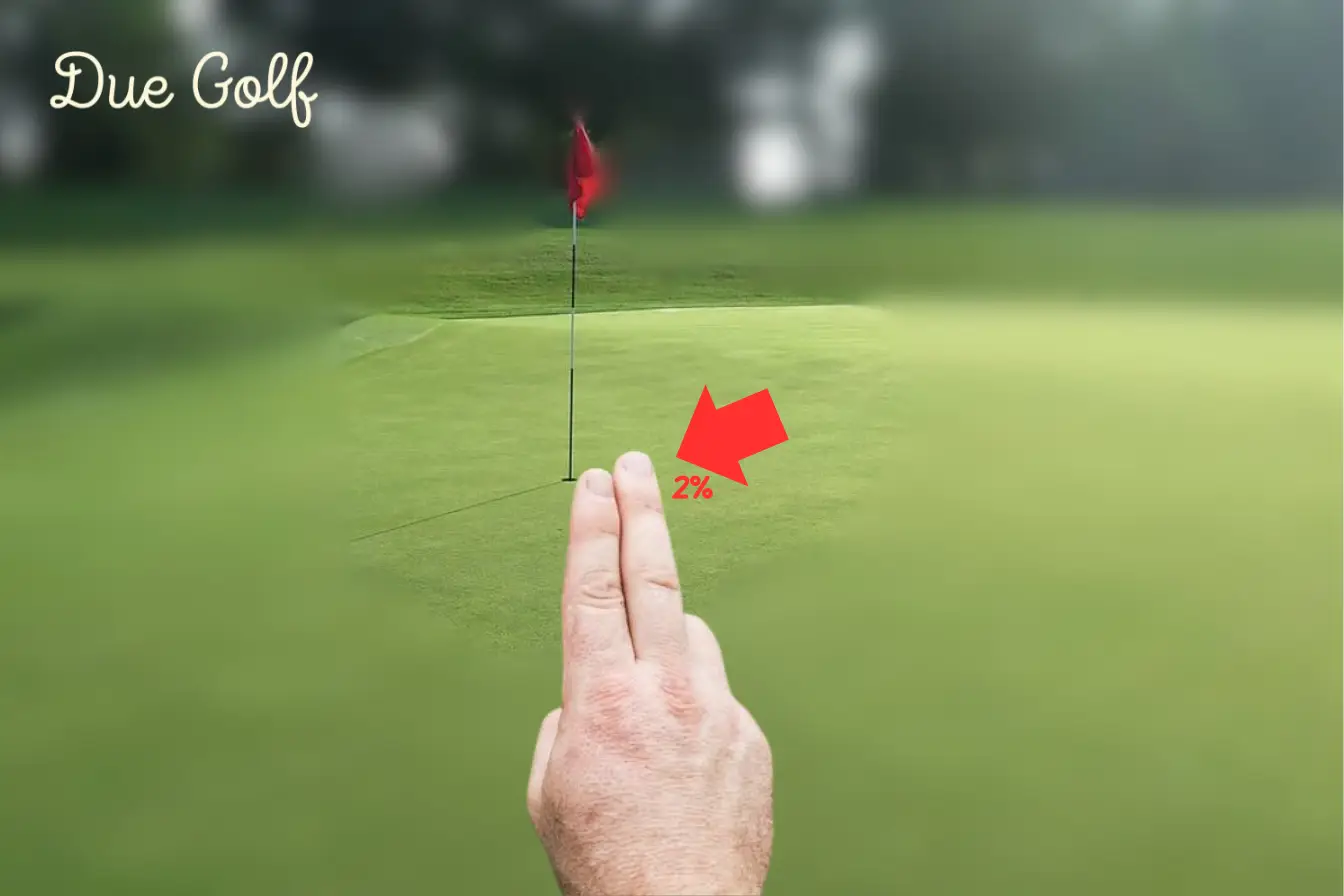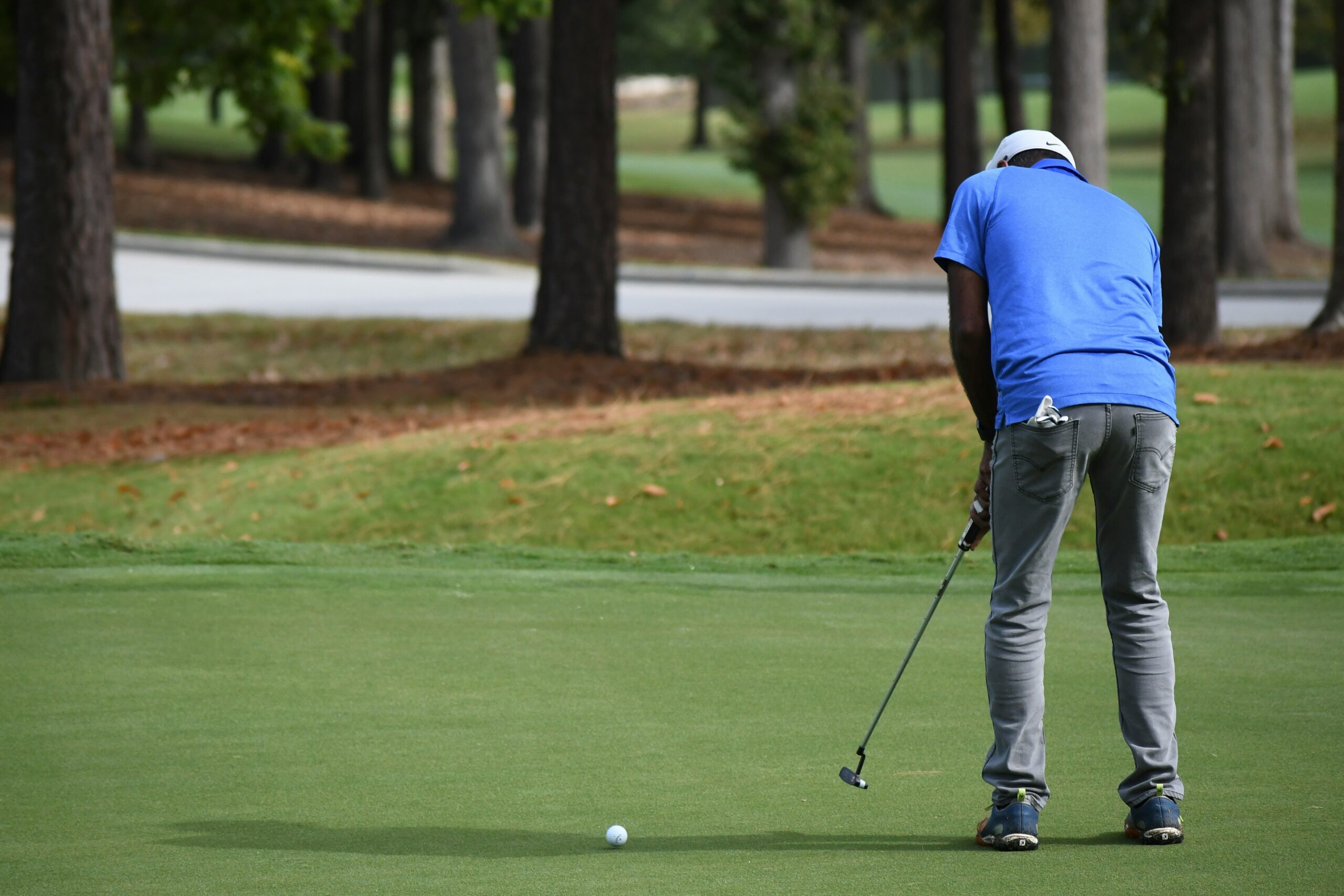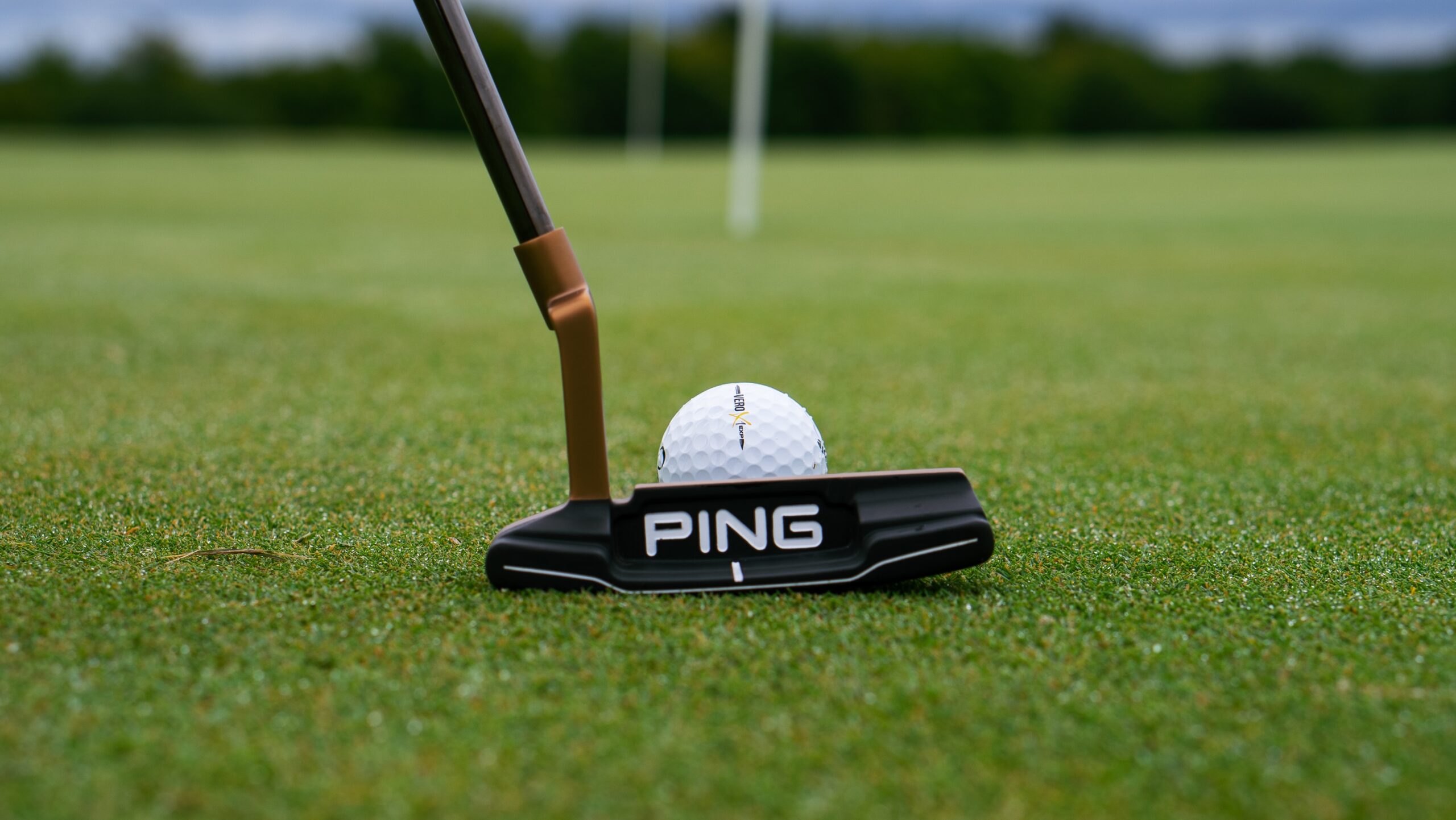
AimPoint Putting is a revolutionary technique that has transformed the way golfers approach putting. Developed by Mark Sweeney, this method relies on the golfer’s ability to read greens by using their feet to feel slopes and their fingers to visually gauge the break’s severity. The process is governed by the principles of physics and geometry, which are applied to understand and predict how a golf ball will travel over the contoured surface of a green. The technique has gained substantial popularity among professional golfers for its effectiveness and simplicity, promising a consistent and reliable method to improve accuracy on the greens.
Contents
The core of AimPoint Putting is its straightforward system that eschews traditional green-reading approaches, instead opting for a more empirical method. Golfers learn to calibrate their stance and sense of balance to detect subtle inclines and to use visual cues by holding up their fingers to determine where to aim their putt. This allows players to convert the feel and visual information into a reliable read, enabling a more confident stroke.
As the method has spread across the golfing world, many instructors have become certified to teach the AimPoint technique, and it’s often featured in coaching sessions and workshops. The success of AimPoint is reflected in the testimonials of tour professionals and amateurs alike, who credit this innovative approach for significant improvements in their putting performance. The effectiveness of this technique underscores the importance of a sound strategy on the green, reiterating that sometimes, a scientific approach can offer the edge needed to excel in the game of golf.
Fundamentals of Aimpoint Putting

Aimpoint Putting involves a refined approach to understanding and executing putts on the golf course. It is designed to enhance a golfer’s ability to read greens and predict ball paths with greater accuracy.
Key Elements:
- Reading the Green: Golfers assess the contours of the green, identifying the slope and its direction.
- Determining the Aimpoint: Based on the slope read, they pinpoint where to aim the putt.
- Feeling the Slope: Players often physically feel the incline under their feet to gauge the slope’s severity.
Aimpoint Process:
- Stand near the ball’s path at the midpoint between the ball and the hole.
- Hold out fingers against the visual line to the hole to estimate the break based on the slope’s degree.
Principles of Aimpoint:
- Slope: The green’s gradient influences the ball’s break.
- Stimp: The speed of the green, which affects roll distance.
- Percentage Break: How much a putt will deviate from a straight line to the hole is determined by combining slope and stimp readings.
Utilisation:
Aimpoint Putting is applied by professionals and amateurs alike. It is a blend of science and skill, involving the physics of ball roll and the intuitive sense of a player’s experience. Proper use of this technique is said to lead to consistent putting results.
Techniques for Reading Greens

Proper green reading is the bedrock of successful putting in golf. It involves assessing the physical characteristics of the green and understanding how they affect the roll of the ball.
Assessing Slope and Contour
A golfer starts by observing the slope and contour of the green, which dictate how the ball will curve en route to the hole. They look at the overall tilt of the green and may walk around to view it from various angles. When evaluating the slope, the aim is to estimate the gradient, looking for subtle rises and falls. Knowing the AimPoint method can be especially beneficial as it provides a structured way to determine the direction and degree of the slope using the golfer’s feet.
Determining Speed and Roll
Once the slope is understood, a golfer must consider the speed and roll of the green. This step requires attention to the grass grain direction and moisture levels, which can both accelerate or decelerate the ball. Practice putts help in gauging the speed. The smoother and firmer the green, the faster the ball will tend to roll.
Executing the Putt

A successful execution of the putt in AimPoint Putting hinges on the golfer’s precision in both stance and alignment, as well as the meticulously honed stroke mechanics.
Stance and Alignment
The golfer’s stance should be comfortably wide to ensure balance, with the feet parallel to the intended putt line. Proper alignment is achieved when the eyes are directly over the ball and the putter face is perpendicular to the target line. This setup creates the optimal conditions for a straight and controlled putt.
Stroke Mechanics
The golfer’s stroke involves a smooth pendulum action, initiated by the shoulders and with minimal wrist hinge, maintaining the putter face’s orientation throughout. It’s essential to strike the ball with a gentle acceleration, ensuring the putter head follows through along the target line. Consistent mechanics contribute significantly to putt accuracy and are a testament to the effectiveness of AimPoint Putting.
Training Drills and Practice Routines

To enhance proficiency in AimPoint Putting, a golfer should integrate certain training drills and specific practice routines into their regimen. Embracing the importance of assessing slopes and break, regular drills can make a significant difference in one’s ability to read greens accurately.
- Slope Assessment Drill: This involves practising reading the slope with one’s feet to determine the degree of incline, which directly influences putt break. A consistent routine in different slope conditions can improve one’s judgment on the greens.
- Stimp Reading Practice: The speed of the green—known as the ‘stimp’—plays a crucial role in AimPoint techniques. Golfers should practice on greens of varying speeds, using stimp meters if available, to adapt their touch accordingly.
- Putt-to-Percentage Drill: Here, practitioners gauge the required percentage break based on the slope degree and stimp. This requires a series of positioned putts aligning with a pre-worked-out break percentage to refine the skill of judging break accurately.
For sustained improvement, golfers should consider incorporating AimPoint drills into their regular sessions. These can consist of repeating the above exercises, but with an increased focus on replicating course conditions.
Practitioners might also utilise the string line method to develop a keen eye for subtle breaks and slopes on the green. This approach assists golfers in visualising the putt line more clearly, thereby internalising the readings for better recall during actual play.
Regular training drills are integral to mastering AimPoint Putting. One should aim to allot sufficient time to these drills during practice sessions to ensure they become second nature.
Equipment Selection
Selecting the proper equipment is a critical step in Aimpoint Putting, focusing on the putter and golf balls as these directly influence putting accuracy and performance.
Choosing the Right Putter
When choosing a putter, golfers should consider the head design and weight distribution. A face-balanced putter tends to work well for players with a straight putting stroke, whereas a toe-hang putter may be more suitable for those with an arced stroke. The length of the putter should allow a comfortable and natural stance.
- Putter Head Designs:
- Mallet
- Blade
- Peripheral weighted
- Weight Distribution Types:
- Face-balanced
- Toe-hang
Importance of Golf Balls
The selection of golf balls impacts how the ball rolls and reacts on the green. Balls with a softer feel are generally preferred for putting as they can provide better feedback and control. The construction of the ball, whether it is two-piece or multi-layer, also plays a role in its performance on the greens.
- Golf Ball Feel:
- Soft
- Firm
- Golf Ball Construction:
- Two-piece
- Multi-layer
Common Mistakes and Corrections
Incorrect Slope Estimation: A frequent error golfers make is the misjudgment of the green’s slope. This causes an inaccurate aim and putt speed. To correct this, golfers should stand at the midpoint of their putt and feel the slope with their feet, giving them a better estimate of the gradient.
Assigning the Wrong Slope Number: Assigning an inaccurate number to the slope can lead to miscalculation of the break. Golfers must practise assigning a slope number that accurately reflects the slope’s degree, improving their chances of holing the putt.
Misinterpreting Break Direction: Golfers sometimes predict the break direction incorrectly. As a remedy, they can use the AimPoint method by lifting fingers to determine the break.
Not Considering Stimp Reading: The green’s speed, known as the ‘stimp’, is crucial but often overlooked. They should take into account the green’s stimp when planning the putt.
Inconsistent Stance or Alignment: Inconsistency in stance or alignment can negate the benefits of a proper AimPoint read. It is essential to maintain a consistent stance and body alignment throughout the putting process to increase accuracy.
Frequently Asked Questions
How does the AimPoint putting technique improve accuracy on the greens?
The AimPoint putting technique offers a systematic approach for reading greens, helping golfers assess slopes and predict the ball’s path with greater precision. By gauging slope inclination and the green’s conditions, players can determine the most accurate aiming point and speed for their putts.
Where can one find instructional material like videos or a book on AimPoint putting?
Instructional materials such as videos or books on AimPoint putting can be found on AimPoint Golf’s official website, where comprehensive guides and tutorials are available to help improve putting skills.
What are the fundamental principles of the AimPoint Express method?
The fundamental principles of the AimPoint Express method include reading greens by understanding slope, speed (or ‘stimp’), and break percentage. This method simplifies reading the green to improve a golfer’s prediction of the putt’s trajectory.
Which professional golfers have adopted AimPoint for their putting strategy?
Various professional golfers have adopted AimPoint for their putting strategy. The method has gained popularity on professional tours and is used by numerous top players seeking consistent results on the greens.
Can you explain the process of using an AimPoint putting chart or cheat sheet?
An AimPoint putting chart, or cheat sheet, is a reference tool that aids golfers in determining the correct amount of break to play for a given putt, factoring in slope degree and distance. The chart simplifies the decision-making process during play.
How does one effectively integrate AimPoint methods into their regular putting practice?
To effectively integrate AimPoint methods into regular putting practice, golfers should start by learning how to assess slopes with their feet and then progress to using the AimPoint chart or technique to establish a consistent pre-putt routine that includes reading the green’s contours and accounting for gravity’s effect on ball roll.

